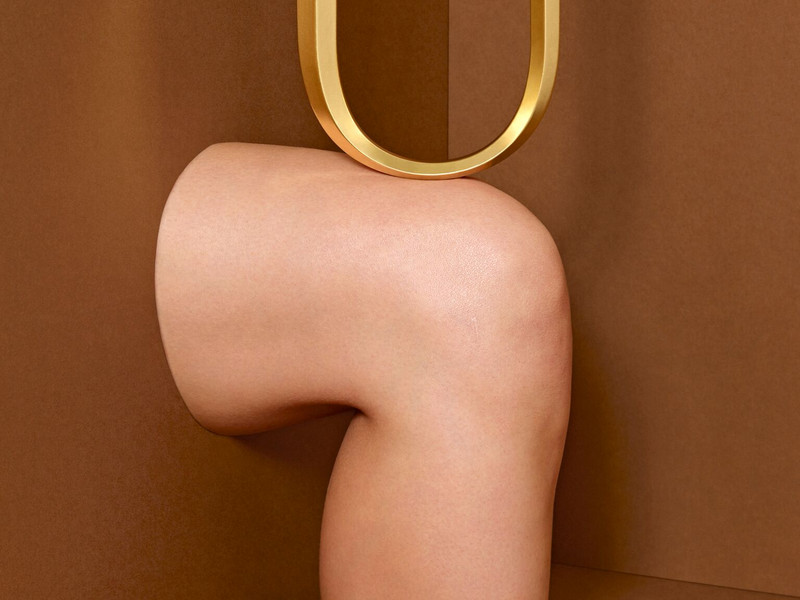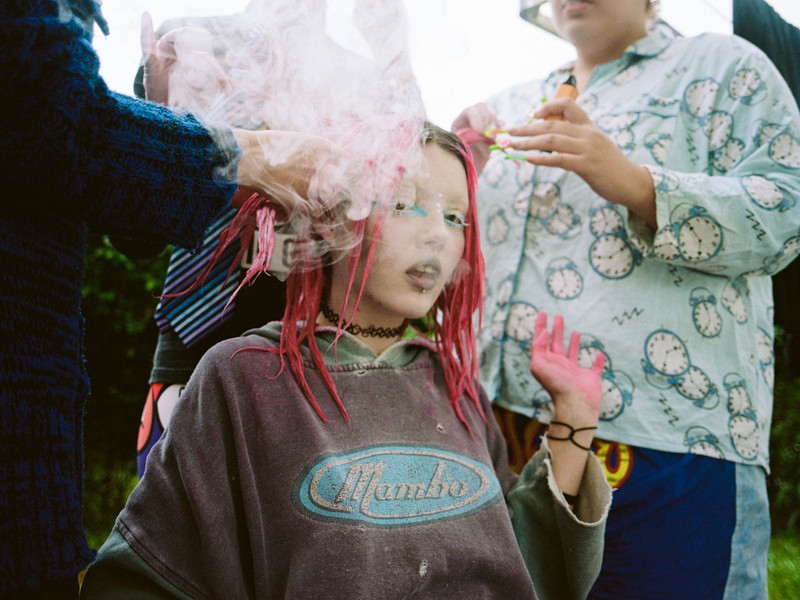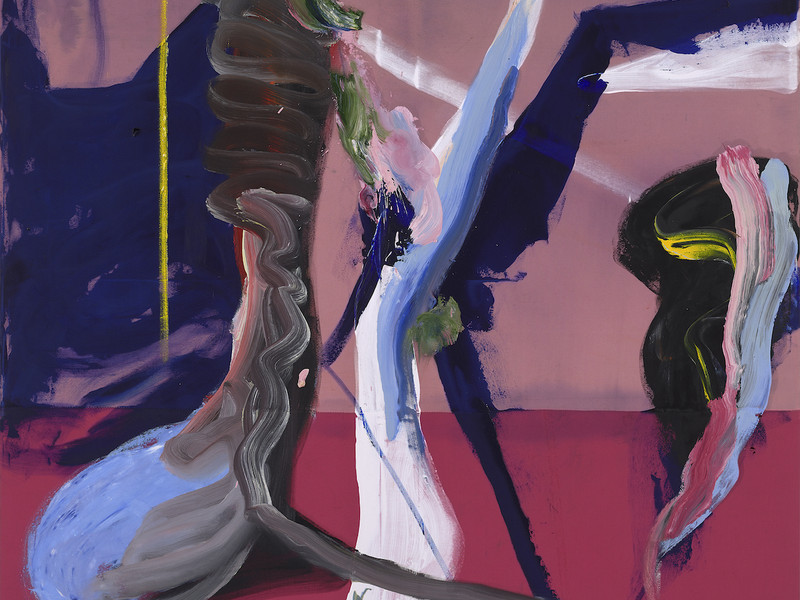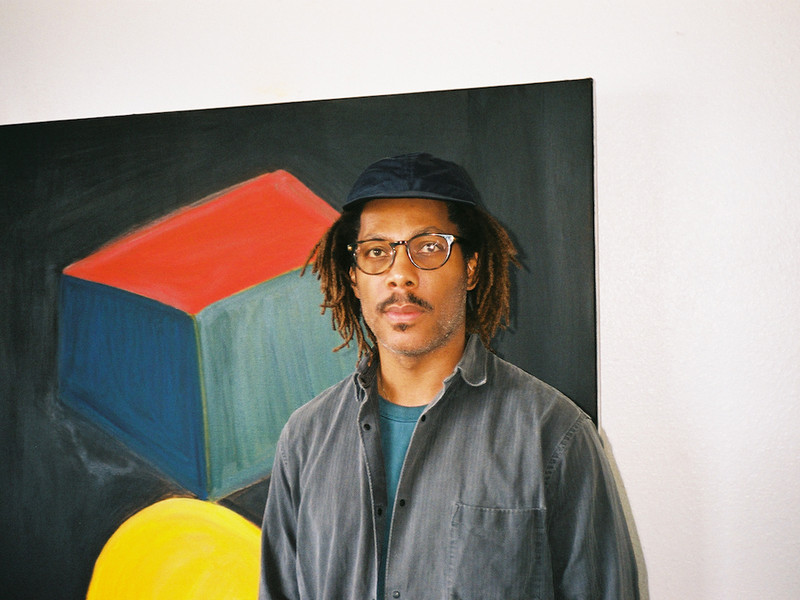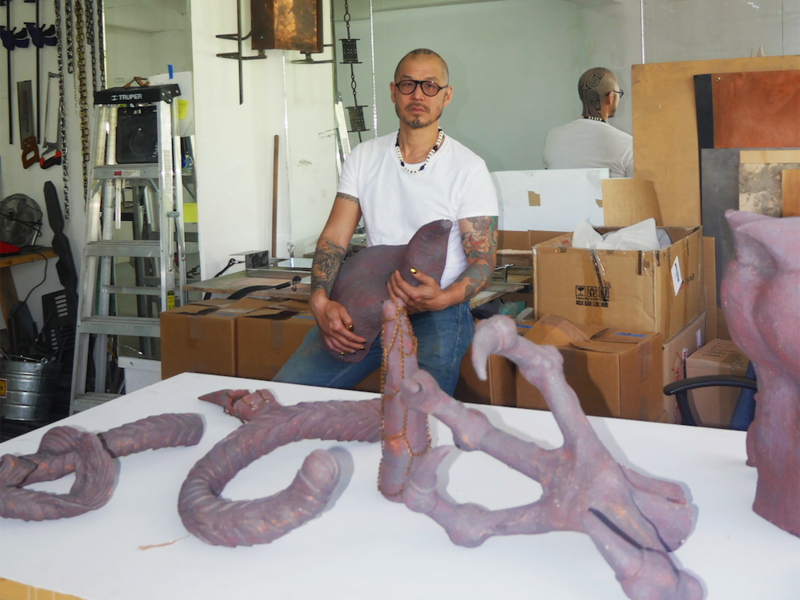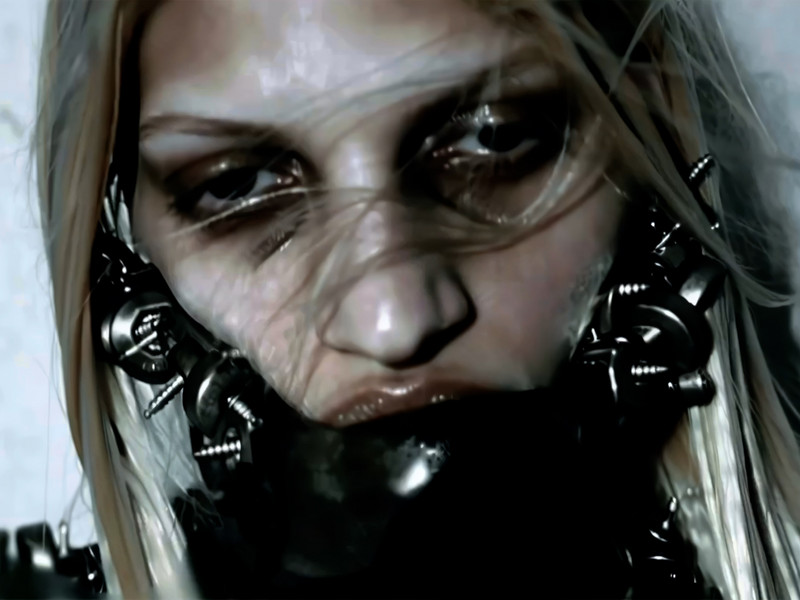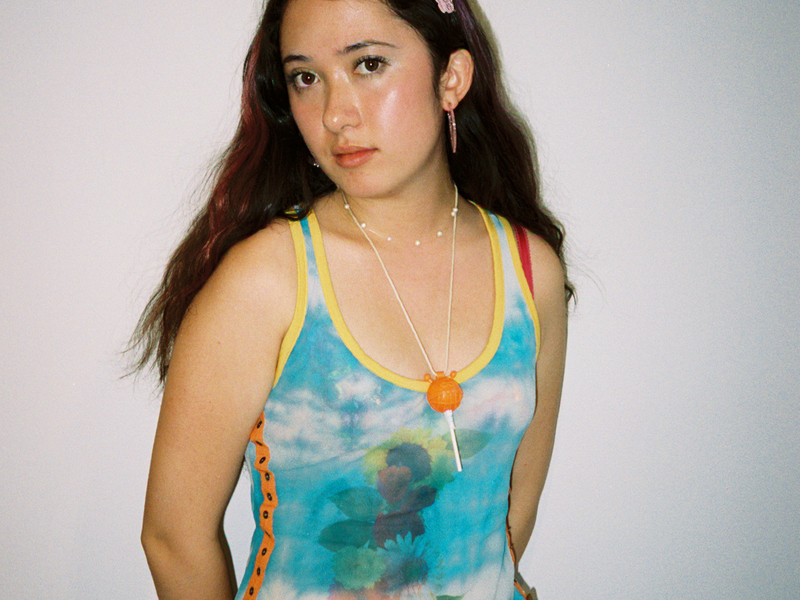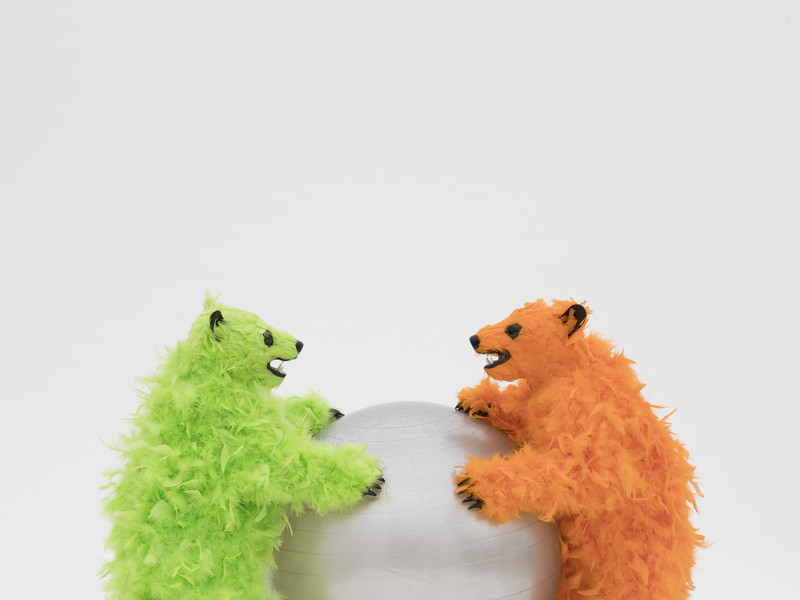My Holy Place Is Not So Far: Nick Atkins
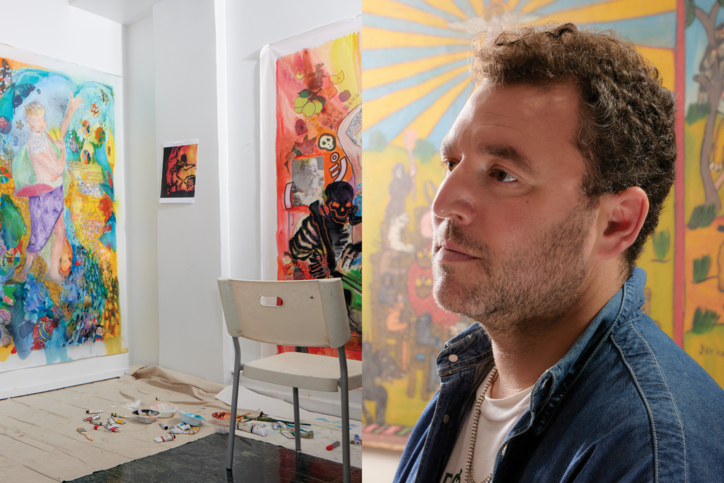
The New York-based artist's work spans the gamut of mediums: painting, drawing, ceramics, video, sound, etc, and has recently been especially centered around ancient Greek and Roman mythology. "As a kid I had this Greek mythology book that had a major influence on me," Atkins explains. "It taught me how to draw and a lot of heavy life lessons. That’s kind of the point of mythology, to explain the unexplainable to people. So I’ve been using that as inspiration."
Functioning as a form of therapy for the artist, investigating and developing the work allows him to pull apart and make sense of the world around him. "Recently, with New York City coming out of a few very difficult years, the studio process and the balance it makes in my life has been more sacred for my mental health — for my expression as a human." It's evident when speaking with him that he takes in everything with a level of care and introspection: a rare breed of artist who listens and observes more than expounds.
Read on as we have a chat about what he's been up to lately.
Paige Silveria— Do you have any shows coming up that you’re focusing on?
Nick Atkins— No and that’s been really nice. I’ve gone through different aspects in my career as a painter and now I’m just focused on making a body of work that’s really meaningful to me and inviting people that I could potentially work with or show with, or whatever — just conversations. I’ve realized that it’s a big, big part of being an artist, inviting people over and having conversations in the studio about the work that I’m making. Peers, gallerists, collectors, whatever. Recently, it’s something that I’ve been like, “Wow I really need to do this more.”
PS— The last time we did an interview four years ago, we spoke about Hanji Party, this world you created within where you contended with ideas of personal darkness and society overall.
NA— That was a narrative that I was working with to explain things that were going on with me and also to access inspiration imagery to make work by telling a story. Now I’m not telling that specific constant continuation of that one story. I’ve still been using mythology and history to make work. It comes from a similar place of personal stories, but it’s broader. Lately I’ve been thinking about American society. I’ve started at the beginning, at Greek and Roman mythology. As a kid I had this Greek mythology book that had a major influence on me. It taught me how to draw and a lot of heavy life lessons. That’s kind of the point of mythology, to explain the unexplainable to people. So I’ve been using that as inspiration, comparing these stories to what’s going on today and what kind of feels like — well it’s harsh to say — but a collapse, or a change. Last time we talked, I was thinking a lot about societal change and now it’s a little bit more connected to real history rather than a personal history. And adding my style and twist, my interpretation. Learning them as a child, living them and looking at them again as an adult.
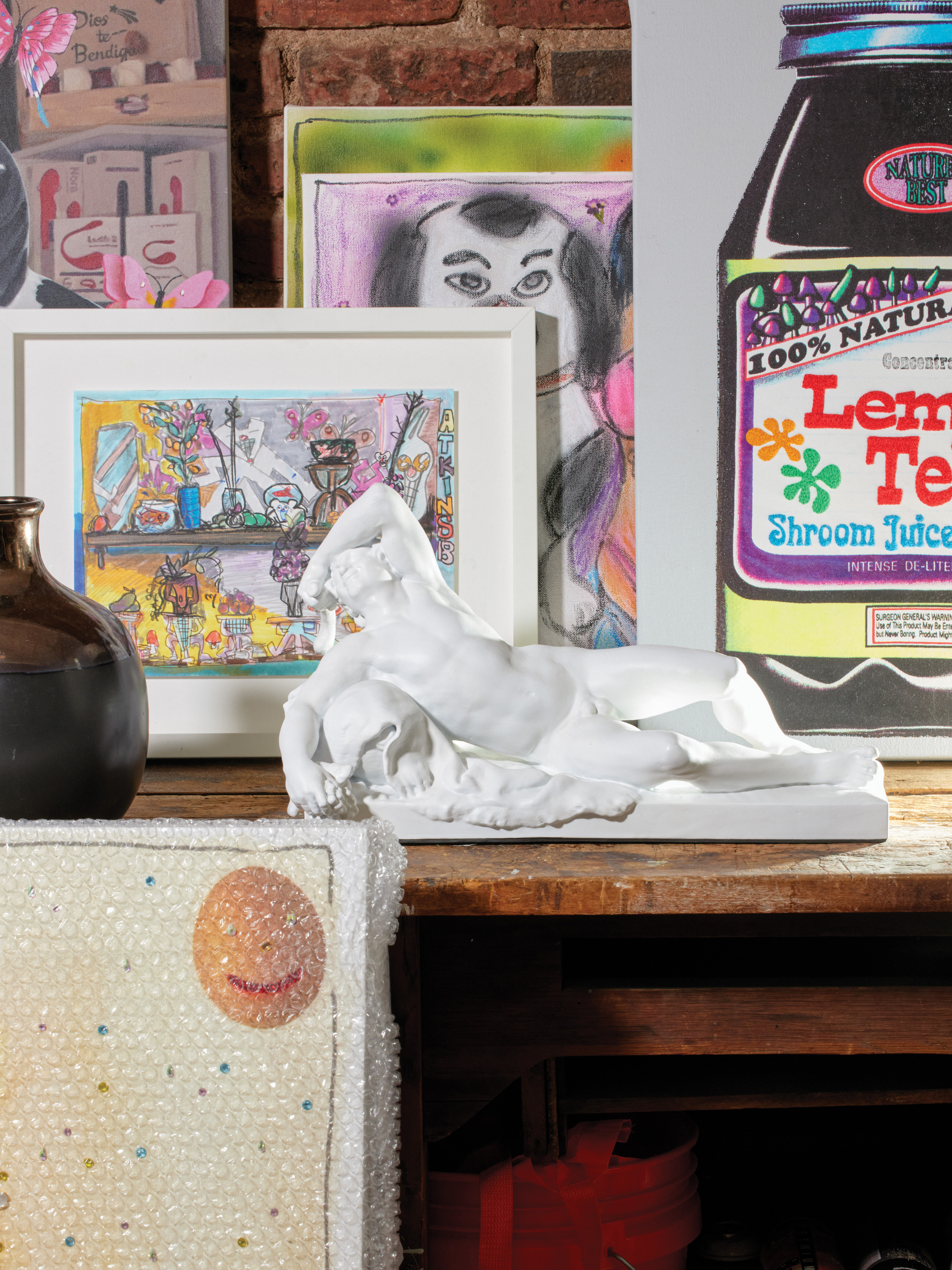
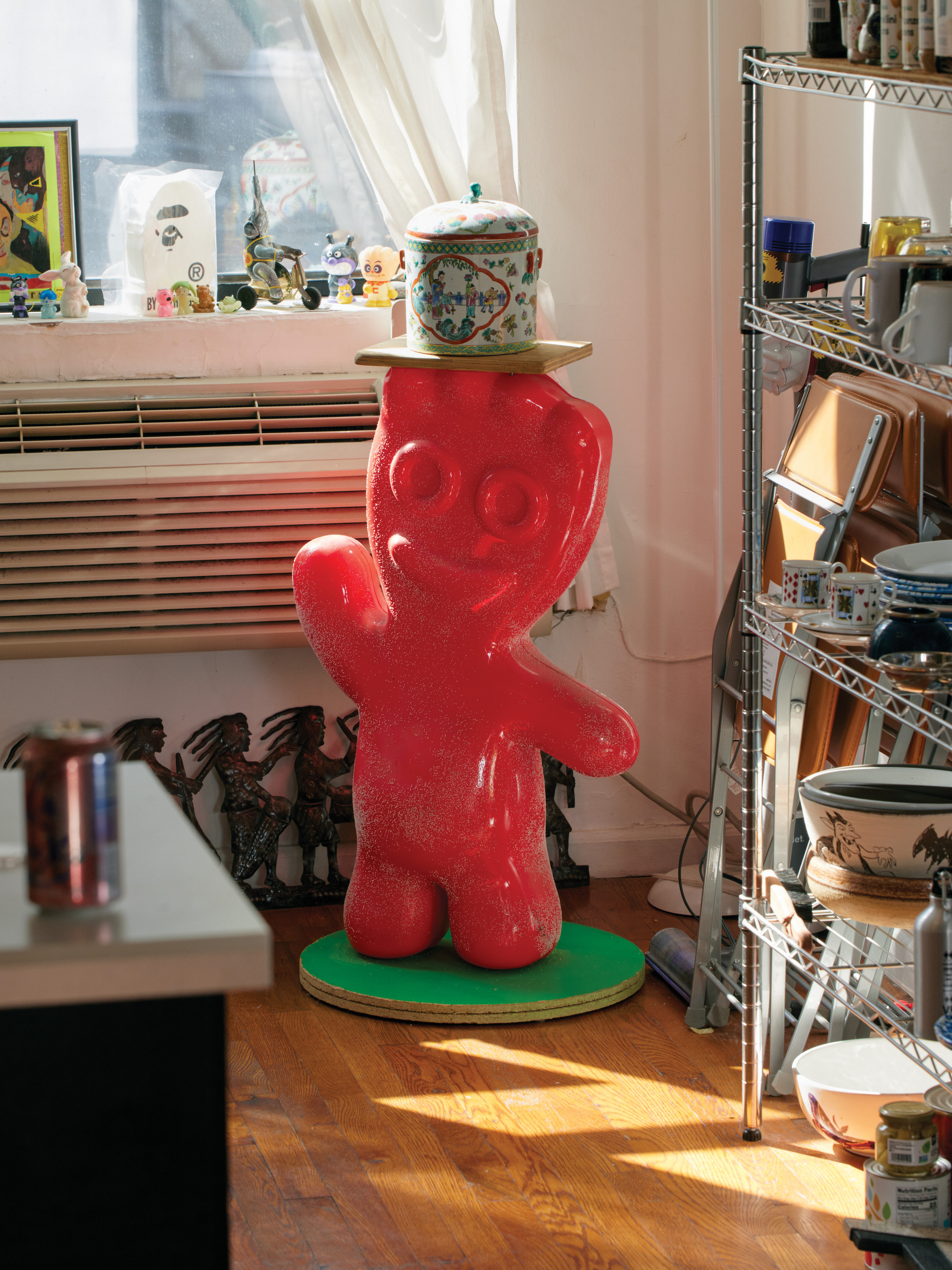
PS— Can you give me an example of one of the stories from the book that stood out to you when you were young?
NA— There’s just so many. It’s all of these connections of humans to nature and the elements and higher-power gods and goddesses. Then human to human, what they do to each other. A lot of the heavy stuff. I loved the idea that there were all of these half-man, half-nature things. These creatures were our closest connection to nature before we took a different path. Now we say that those things don’t exist. That’s just mythology. We worship one god and it’s not nature. It’s something else. I like the idea that there were spirits and that we interacted with them. There were people that were river spirits and they lived in the river, which they represented. I’m working on a portrait of one of those river spirits. But it also kind of looks like my dad in a weird way. So there’s that weird connection too. And that’s what I’m working on recently, and some funky frogs and some of those other guys called satyrs or fawns.
PS— What do you think Freud would say about your dad appearing as the river spirit?
NA— I don’t really know Freud, but all my friends used to call my dad Zeus. He was big and bearded. One time when he was mad at us he hurled a big bag of charcoal into the sky. They all called him Zeus after that — so I’m sure there’s some Freud shit there.
PS— Going back to the idea of collapse, do you not think that there’s progress?
NA— Sometimes I think the progress is the collapse: AI, social media, global war. I’m a big believer in the human race as a whole and in nature and the world. So regardless, whatever is going to be is going to be. I don’t necessarily see much progress, especially here in New York City, as society goes, but I’m hopeful. It’s not like a depressing look on society. Throughout human history there have been rises and falls in human society and we study those throughout our educational system: the Greeks, the fall of the Roman Empire. There is sometimes a rise and sometimes a fall.
PS— This feels timely, when religion is at its lowest and people are having an existential crisis, looking to ideas like astrology to connect to something bigger than themselves.
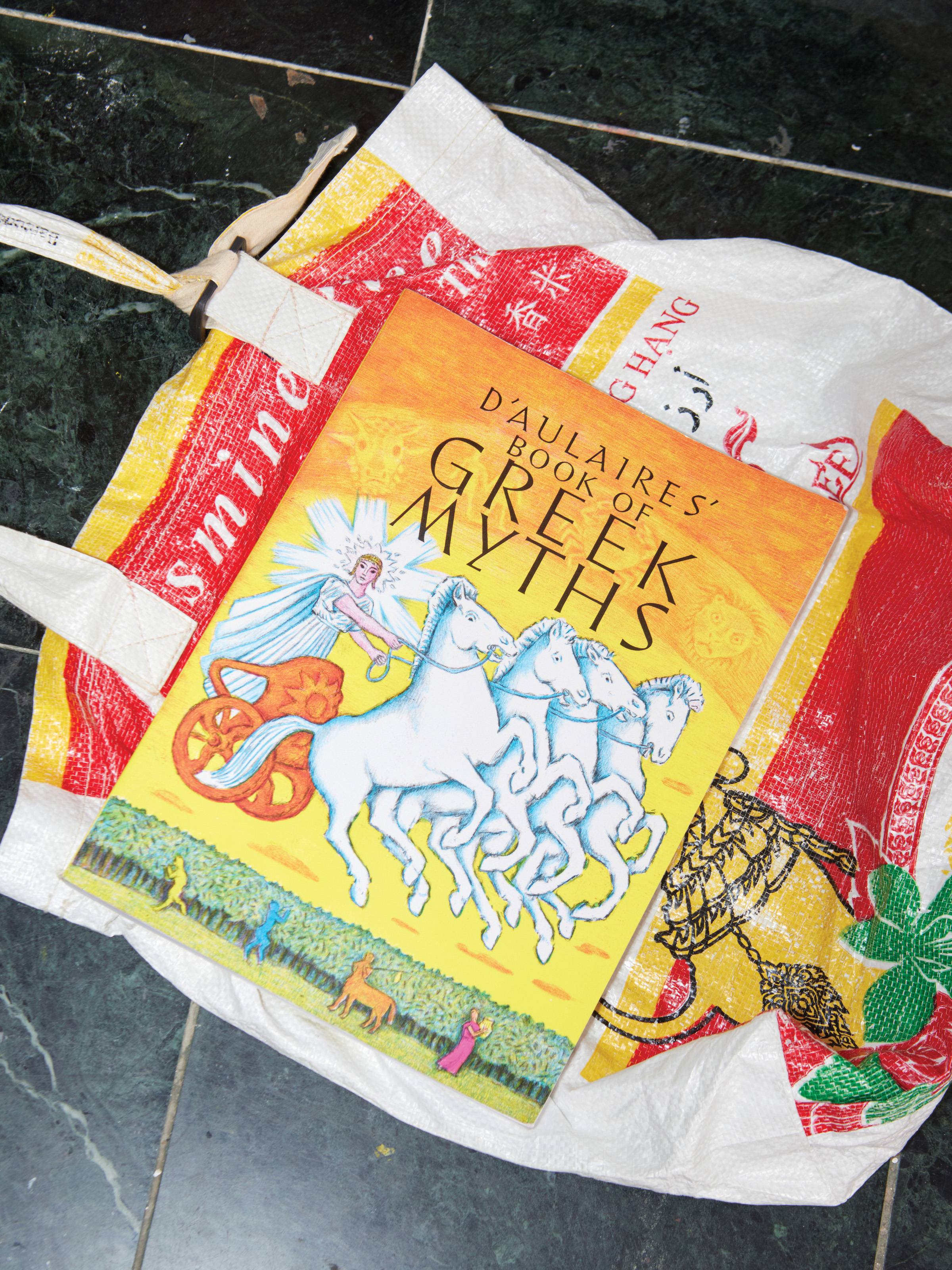
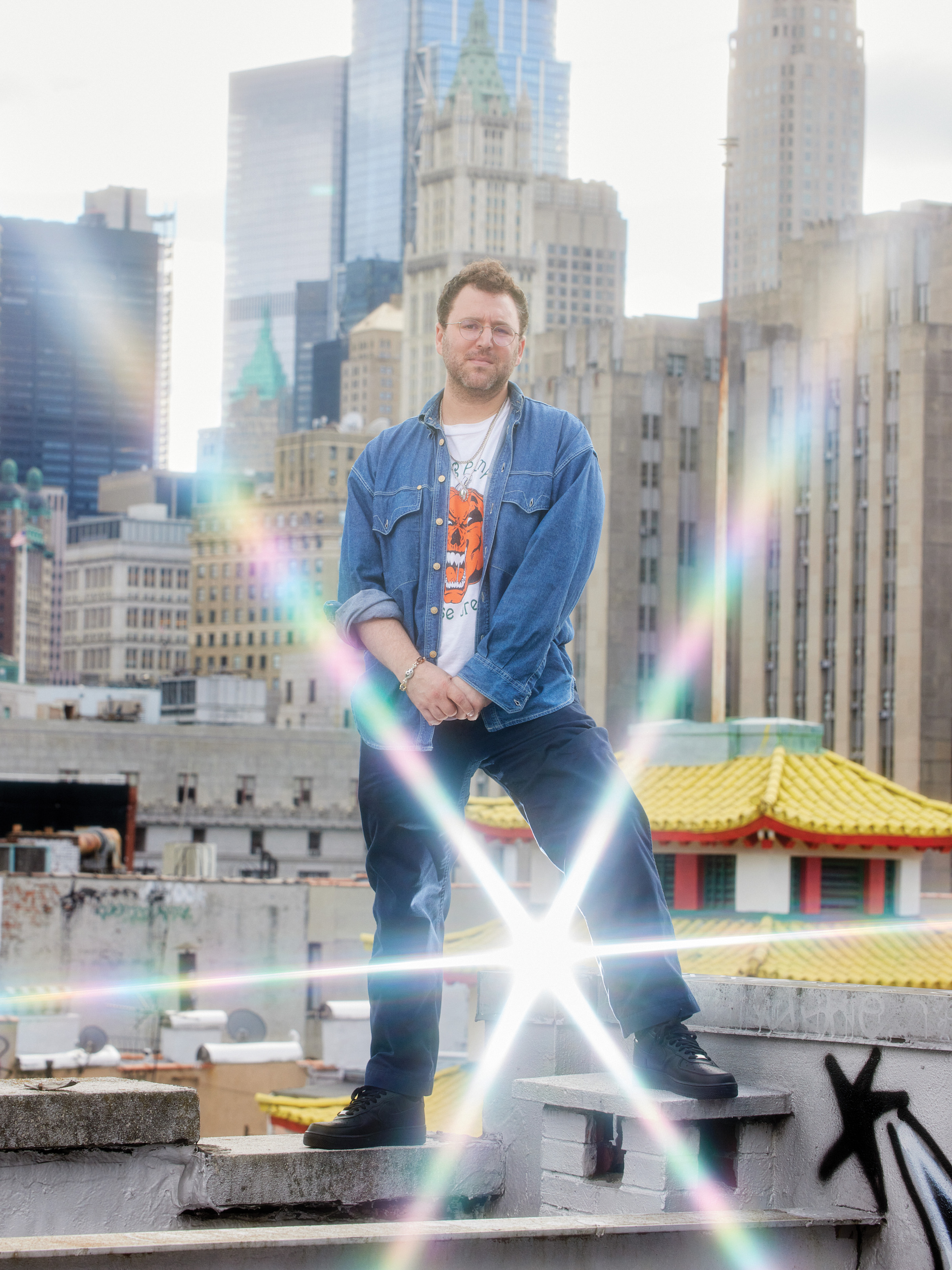
NA— Yeah I don’t know a lot about astrology but when you look at the imagery, it looks like stuff from Ancient Greece maybe? When you’re talking about Orion’s Belt up in the night’s sky, Orion was a character in a Greek myth using the position of the moon to analyze our existence. We’re trying to find those relationships between ourselves and nature to make ourselves feel better. I certainly think it’s a mix of spirituality on a daily basis that’s a huge part of my relief, my savior. What those images look like now is something interesting for me to explore as well. The visuals and the symbols of those things, like Orion’s Belt and other mythological images that we’ve seen throughout our lives. They’re around. They’re logos of clothing brands. It’s like, “Wait, what do these mean?” We still use them to a certain extent, but we just don’t worship them. Or maybe to a certain extent we do. So I’m just taking a look at those certain connections to spirituality and icons. Just getting a clearer perspective through conversations like this of what I’m trying to do.
PS— Tell me about the fountains. They’re some of my favorite works and so clearly yours.
NA— I assemble the fountains here. [pointing across the room] That closet is insane, just full of all the pumps and pools and all the aspects that create the assemblages. I like them as a symbol for a person, society, for beautiful things in public. I actually don’t think they really have come to a conclusion on whether historically people made fountains for washing clothes or because they liked the sound of water falling and interactive sculptures. I think they’re just as aesthetically pleasing and therapeutic as functional. I like them for all of those reasons. I also like exploring and manipulating the way that I look at a fountain. They move and make noise, which is nice. And you can’t control them really. You can try.
PS— So this issue is about New York. It’s the magazine’s 20th anniversary issue. You’ve been in NYC for a long time. Can you reflect on your years here?
NA— Yeah! I love New York even more every day. I really enjoy being here. I feel that cities are a lot like people and you can get down with certain types of people and some you just can’t. I can get down with New York very easily. A lot has changed. I’ve lived here for about 25 years. Every day I wake up and get to walk out of here I’m super grateful. Every time I pass over a bridge and get a shot of the skyline or look at the water, or just get to walk. This morning I walked seven or eight miles for no real reason. The layout, the geography, my understanding of the city, just allows me to feel comfortable and at home. I’ve never really felt that way anywhere else. Even in my childhood home, I never felt comfortable. But here, this is like Mecca. It’s a holy place for me.
PS— You left New York for a bit at one point. Did you feel like you needed to do that?
NA— Yeah I started blaming a lot of my own personal issues on the city when I was at a certain age and point in my life. When really I was the problem. Once I identified that, I started working on it. I needed to leave, I think, to come back and realize just how much I get out of living here. And it’s not an easy or simple place to live. But it’s the place for me.
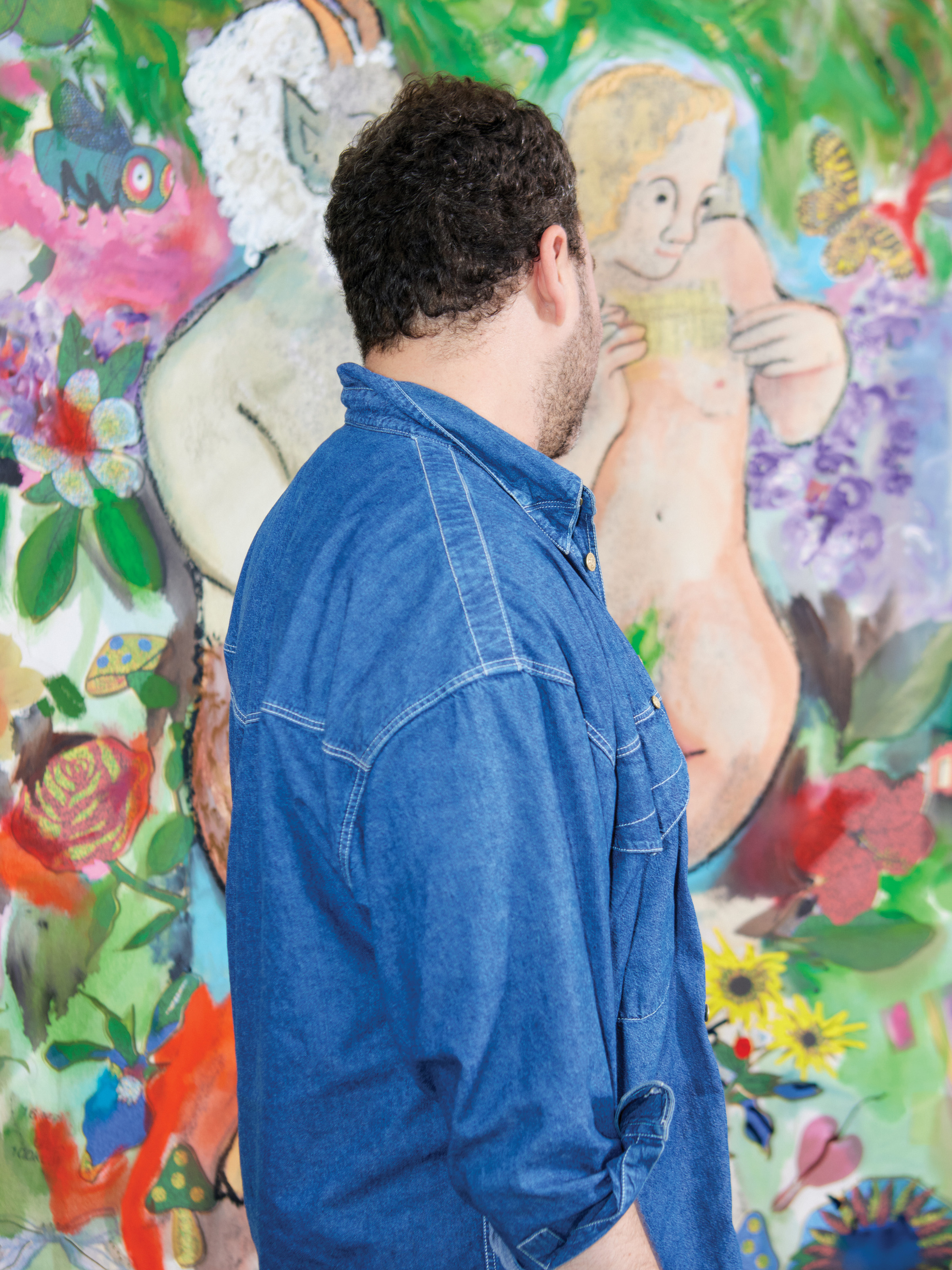
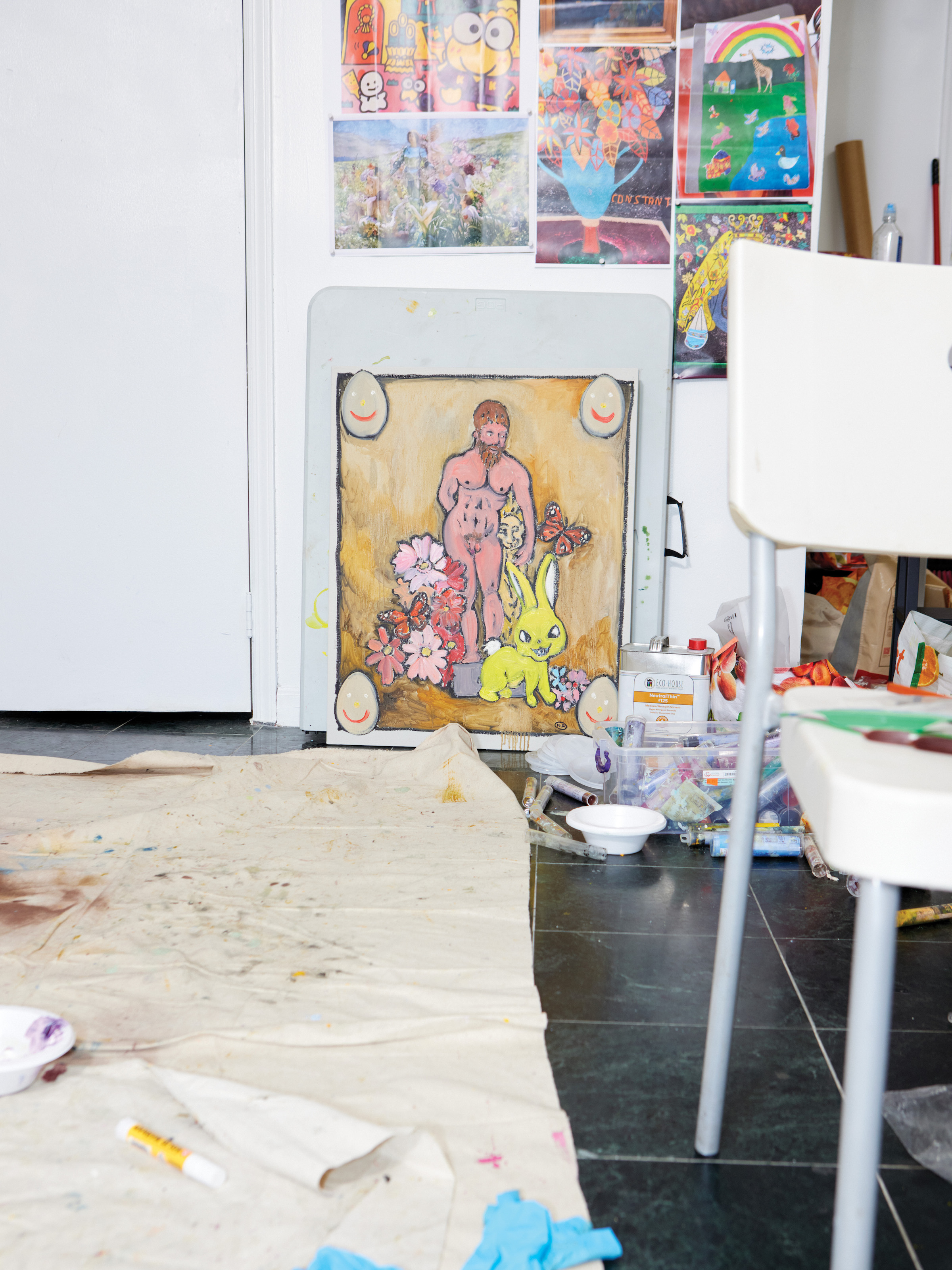
PS— What are some of the struggles, do you think, living here?
NA— A lot of the societal issues I was referencing before. We’re coming out of a shaky economic time. Police seem to be going through their own thing. A lot of mental health issues, drugs on the street like K2 and fentanyl that didn’t exist 10 years ago.
PS— What is K2?
NA— It’s this synthetic marijuana that a lot of people are smoking. I’ve never tried it but it seems to put people into a slightly schizophrenic trance.
PS— Yikes. Why would someone want to put themselves into that?
NA— For a number of reasons! I actually got into a big dispute with one of the guys that sells K2 in my neighborhood. I was like, “Look I just want to talk this out because I’m going to see you every day. I’m not trying to fight.” So we talked it out. I think he said he got the shit for like 400 bucks a pound and made thousands of dollars off of it. There’s no legislation for it yet so police can’t convict him for it. And he just explained that if he’s going to survive, this is what he’s going to have to sell. So I see socially that there are reasons and this is just where we’re at. But it affects people now in a very different way than other drugs did years ago. And like fentanyl, for instance, if you’re just a young kid and you’re trying to party, you buy a bag of coke and it has fentanyl and your fucking friend dies. That didn’t used to happen! Like people would die, but it was very different. Like they were really pushing it and it was heroin or they blew up their head or hung themselves. It was a very distinct difference. It’s getting pretty murky and severe. And those things affect how a person interacts with the city, with the way they’re partying or the way they’re interacting in the street. That’s certainly a change and an intense one. Also, that’s just how it is. I accept it all. I’m not sure what it means, but it’s definitely a societal change. I’m glad I had that conversation with that guy. It’s easy to look down on certain things, or be upset about it. It’s hard to see the other angle and be like, “Okay this is just part of what’s going on now.” I can accept it or not. And New York kind of like, the more you accept what’s going on, the better the time you’re going to have here.
